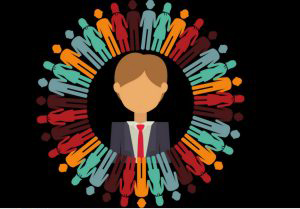Workplace Diversity: Embrace it and Celebrate it

Did you know that over 100 languages are spoken in many cities in North America? The time has come to prepare your workplace for cultural diversity. It has become a multi-cultural mosaic. Canada and the United States are the most culturally diverse nations on earth. We are becoming more of a “toss salad” than a “melting pot”.
As the multicultural population in North America explodes, companies and entrepreneurs often miss market penetration because of the failure to understand the target group’s cultural values and customs.
Cultural and ethnic diversity is challenging the way we do business with multicultural communities.
What is Diversity?
It is a new word which has emerged in our vocabulary. Diversity is not a new favor of the month rather it will be a regular feature on the United States and Canadian HR menu. It means many things for many people.
A lot of people have used diversity as a means to promote or further their personal or group agenda. I don’t mean to distract from those agendas. Others have deliberately excluded themselves from the conversation assuming “it” is not for them.
The original intent of the movement called diversity management was to create an environment that allows all people to maximize their contribution.
Diversity is here to stay, it is not going to disappear; it will be here for good, so let’s get used to it and celebrate diversity.
Many people equate diversity with cultural differences or affirmative action. But we cannot define diversity so simply.
Diversity is more than simply “us vs. them” – it is the understanding that we are all unique in various ways.
For example, diversity is more than just culture – it is the changing demographics of our population.
Diversity is not just affirmative action either—it is the elimination of stereotypes and discrimination that affects our ability to understand each other and work together productively.
In business, diversity increases profitability by bringing in fresh new ideas and methods. It means greater learning and understanding in schools. In relationships, diversity can mean personal growth.
We should not see Diversity as a detriment, but rather an asset, a celebration of our individuality as well as our commonalities.
Dimensions of Diversity?
There are primary and secondary dimensions of diversity.
Primary dimensions of diversity, which consist of characteristics we cannot change, include race, ethnicity, age, gender, sexual preferences, and mental/physical abilities or characteristics.
Secondary dimensions, which are aspects of ourselves that are less visible, can be acquired, modified, and sometimes discarded. These aspects include education, communication style, primary language, religion, income level, work style, work/military experience, family status, organization role/level, geographic location, group affiliations, and political preferences, among a few.
Advantages of Workplace Diversity
The Stats Canada predicts that 40 percent of the Canadian labor force will be comprised of minorities by 2015. More importantly, it estimates that from 1998 to 2015 some 45 percent of the people entering the Canadian workforce will be minorities.
The companies need to see diversity as the business plan, essential to successful products and increased sales. This is especially true in today’s global marketplace, as companies interact with different cultures and clients.

The advantages of a well-integrated company are:
- Creativity increases when people with different ways of solving difficult problems work together towards a common solution. A common saying reminds us that two heads is better than one. There is no one best answer to any question–the more ideas you can obtain from different people, the more likely you are to develop a workable answer. Other cultures can offer insightful alternatives Canadians might not have considered.
- Productivity increases exponentially when people of all cultures pull together towards a single inspiring goal. We no longer complete in local markets rather in global markets. One value is that individual identity versus corporate identity. Many Asian communities think and relate in terms of corporate identity, our families, communities and businesses. Don’t we want employees who take ownership and loyalty in their workplaces/businesses?
- New attitudes are brought to the business table by people from diverse cultures. For instance, Canadians may want to consider adopting the perspective other cultures have about time. Our culture believes that “time is money” and “getting to the bottom line” is paramount in business. However, in most other countries around the world “time is for building relationships” and an integral part of getting to know the other party you are considering doing business with before starting a transaction. How much smoother would business deals go in this country if we followed this practice more closely?
- New Language skills are obviously needed in today’s increasingly global economy–and diverse workers often have this proficiency. If a company needs specific knowledge or language skills, it may hire foreign nationals for help. In Canada, we like to believe that English is “the language of the world.” While that may be true for business, our native tongue ranks second in the world behind Chinese and just slightly ahead of Hindustani. To truly build relationships with the other people of the world, we must speak their language.
- New Global Players: Understanding how United States/Canada fits into the world picture is crucial. We tend to call identify diverse communities through hyphenated names like, Chinese-Americans, Indo-Americans, Arab-Americans; I believe the time has come to call everyone global Americans. We live and work in a global arena.
- New processes can result when people with different ideas come together and collaborate. In today’s fast-moving world, there is no longer room for thinking, “We have always done things this way and cannot change.” American/Canadian workers must bring multiple skills to the environment, think cross culturally, and adapt quickly to new situations. Those who meet these criteria are likely to do well, regardless of culture–even in tough economic times.
People from diverse cultures can make American/Canadian companies more productive and profitable. They also bring differences that we must understand and embrace to realize those benefits.
Embrace diversity and celebrate it.
Your company’s success may depend on its ability to do business with today’s multicultural communities. David brilliantly bridges the communication gap among Anglos, Chinese and East Indians in his interactive workshop.
Disclaimer:
THE VIEWS AND OPINIONS EXPRESSED IN THIS ARTICLE ARE THOSE OF THE AUTHOR AND DO NOT REFLECT THE VIEWS OF SPEAKIN, ITS MANAGEMENT OR AFFILIATES. SPEAKIN MAKES NO REPRESENTATION AS TO ACCURACY, COMPLETENESS, CORRECTNESS, SUITABILITY OR VALIDITY OF ANY INFORMATION ON THIS ARTICLE AND WILL NOT BE LIABLE FOR ANY ERRORS, OMISSIONS OR DELAYS IN THIS INFORMATION OR DAMAGES ARISING FROM ITS DISPLAY OR USE.





